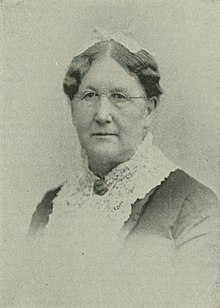Portal:Connecticut
The Connecticut Portal

Connecticut (/kəˈnɛtɪkət/ kə-NET-ik-ət) is the southernmost state in the New England region of the Northeastern United States. It borders Rhode Island to the east, Massachusetts to the north, New York to the west, and Long Island Sound to the south. Its capital is Hartford, and its most populous city is Bridgeport. Connecticut lies between the major hubs of New York City and Boston along the Northeast Corridor, where the New York metropolitan area, which includes six of Connecticut's seven largest cities, extends well into the southwestern part of the state. Connecticut is the third-smallest state by area after Rhode Island and Delaware, and the 29th most populous with slightly more than 3.6 million residents as of 2020, ranking it fourth among the most densely populated U.S. states.
The state is named after the Connecticut River, the longest in New England which roughly bisects the state and drains into the Long Island Sound between the towns of Old Saybrook and Old Lyme. The name of the river is in turn derived from anglicized spellings of Quinnetuket, a Mohegan-Pequot word for "long tidal river". Before the arrival of the first European settlers, the region was inhabited by various Algonquian tribes. In 1633, the Dutch West India Company established a small, short-lived settlement called House of Hope in Hartford. Half of Connecticut was initially claimed by the Dutch colony New Netherland, which included much of the land between the Connecticut and Delaware Rivers, although the first major settlements were established by the English around the same time. Thomas Hooker led a band of followers from the Massachusetts Bay Colony to form the Connecticut Colony, while other settlers from Massachusetts founded the Saybrook Colony and the New Haven Colony; both merged into the former by 1664.
Connecticut's official nickname, the "Constitution State", refers to the Fundamental Orders adopted by the Connecticut Colony in 1639, which is considered by some to be the first written constitution in Western history. As one of the Thirteen Colonies that rejected British rule during the American Revolution, Connecticut was influential in the development of the federal government of the United States. In 1787, Roger Sherman and Oliver Ellsworth, state delegates to the Constitutional Convention, proposed a compromise between the Virginia and New Jersey Plans; its bicameral structure for Congress, with a respectively proportional and equal representation of the states in the House of Representatives and Senate, was adopted and remains to this day. In January 1788, Connecticut became the fifth state to ratify the Constitution. (Full article...)
Karen Anne Carpenter (March 2, 1950 – February 4, 1983) was an American singer and drummer who formed half of the highly successful duo Carpenters with her older brother Richard. With a distinctive three-octave contralto range, she was praised by her peers for her vocal skills. Carpenter's work continues to attract praise, including appearing on Rolling Stone's 2010 list of the 100 greatest singers of all time.
Carpenter was born in New Haven, Connecticut, and moved to Downey, California in 1963 with her family. She began to study the drums in high school and joined the Long Beach State choir after graduating. After several years of touring and recording, the Carpenters were signed to A&M Records in 1969, achieving enormous commercial and critical success throughout the 1970s. Initially, Carpenter was the band's full-time drummer, but she gradually took the role of frontwoman as her drumming was reduced to a handful of live showcases or tracks on albums. (Full article...)General images -
Selected picture -

State facts
- Nicknames: The Provisions State, The Land of Steady Habits, The Constitution State, The Nutmeg State
- Capital: Hartford
- Governor: Ned Lamont (D)
- Lieutenant Governor: Susan Bysiewicz (D)
- Secretary of State: Stephanie Thomas (D)
- Attorney General: William Tong (D)
- Senators: Chris Murphy (D), Richard Blumenthal (D)
- Representatives: Jahana Hayes (D), Jim Himes (D), Joe Courtney (D), John B. Larson (D), Rosa DeLauro (D)
- Total area: 5,543 mi2
- Land: 4,845 mi2
- Water: 698 mi2
- Highest elevation: 2,379 ft (Mount Frissell)
- Population 3,576,452 (2015 est)
- Admission to the Union: January 9, 1788 (5th)
State symbols:
- Animal: Sperm whale
- Bird: American Robin
- Fish: American Shad
- Flower: Mountain Laurel
- Fossil: Dinosaur Track
- Insect: European Praying Mantis
- Ship: USS Nautilus (SSN-571)
- Songs: Yankee Doodle
- Tree: Charter Oak
- Mineral: Almandine
Selected article -
Did you know? -
- ... that the Meriden, Waterbury and Connecticut River Railroad, created as an alternative to the New Haven Railroad, was absorbed into the New Haven after just 11 years?
- ... that the Connecticut Valley Railroad successfully fooled the New York, New Haven and Hartford Railroad into purchasing it by pretending that it planned to expand northwards?
- ... that a variety of the Connecticut field pumpkin is known as "the original commercial jack-o'-lantern pumpkin"?
- ... that Nathan Agostinelli stomped on a Viet Cong flag during his campaign for Connecticut State Comptroller?
- ... that a Connecticut radio station was "the loser in a survival-of-the-fittest battle"?
- ... that Darien, Connecticut, was once home to a train station built inside a cemetery?
In the news

- February 10: Disney to shut down Blue Sky Studios, animation studio behind 'Ice Age'
- October 17: Hundreds arrested for 'dark web' child porn by international task force
- October 3: World War II era plane crashes in Connecticut, US, killing at least seven
- February 21: Sixteen states sue U.S. President Trump to stop declaration of emergency for border wall
Categories
Related WikiProjects

WikiProject Connecticut • WikiProject Connecticut routes • WikiProject UCONN
Selected panorama
Topics
Related portals
Associated Wikimedia
The following Wikimedia Foundation sister projects provide more on this subject:
-
Commons
Free media repository -
Wikibooks
Free textbooks and manuals -
Wikidata
Free knowledge base -
Wikinews
Free-content news -
Wikiquote
Collection of quotations -
Wikisource
Free-content library -
Wikiversity
Free learning tools -
Wikivoyage
Free travel guide -
Wiktionary
Dictionary and thesaurus


























































